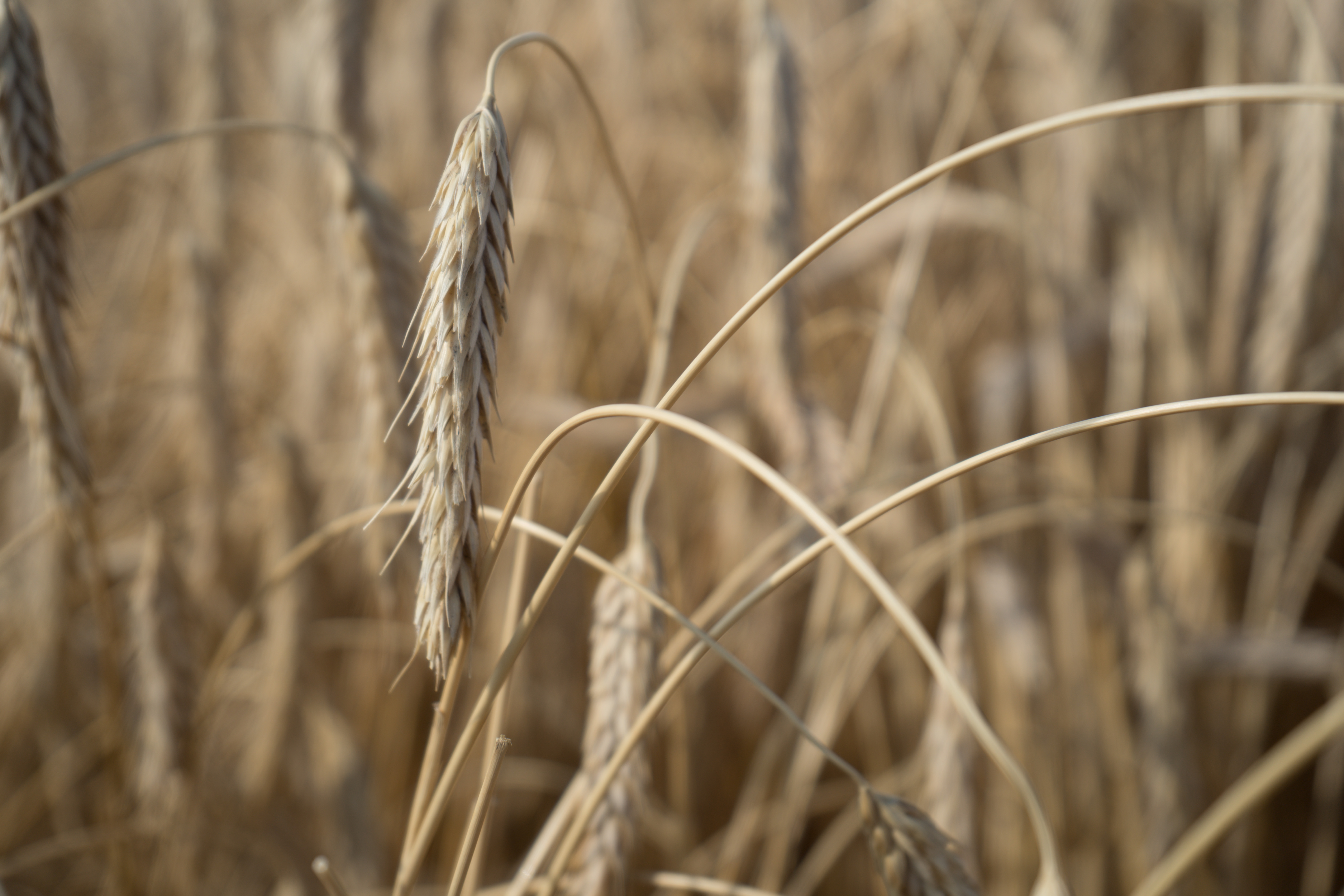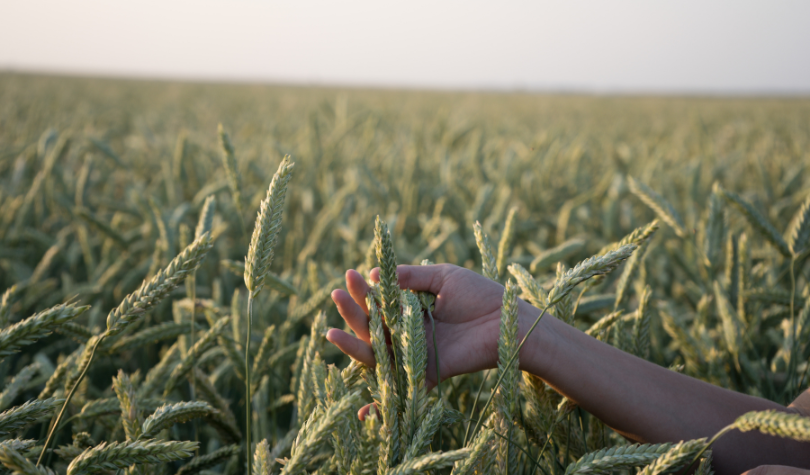In recent years, as discussions around sustainability continue to be front and centre, triticale has seen renewed attention as a versatile and sustainable crop for farmers. This wheat-rye hybrid, created about 100 years ago, offers a range of benefits, including high yields, drought tolerance, disease resistance, and the potential for multiple uses such as grain production, forage, and even ethanol production. With local breeding programs in Alberta and Saskatchewan as well as the United States producing improved varieties, triticale is becoming an increasingly popular choice among farmers in Canada, especially in areas with soils depleted of resources or affected by nature such as drought or even excess moisture. Currently, triticale is mostly grown on marginal land with good results, however, as farmers recently are giving this crop some prime land, we might be in for a very nice surprise!
Triticale for Grain Production
One of the primary advantages of triticale is its high grain yield. New varieties, such as TriCal Surge™ or AB Snowcat, have been developed to yield at least 10 to 15 percent higher than the high-yielding feed wheat varieties on the market.
Besides yield, these newer varieties have also been bred to provide advantageous characteristics, such as:
- Earlier maturity – addressing a previous concern of farmers who wanted to grow triticale for grain
- Shorter stature – compared to earlier varieties and helps to prevent lodging and allows for higher nitrogen application, resulting in increased yields
- Drought resistance – for those dry-land farmers, triticale is a reliable choice even in the driest years
- Disease resistance – breeding efforts have focused on improving resistance to ergot, a fungal disease that affects triticale, by crossing triticale with wheat and then backcrossing it to triticale
Silage Potential of Triticale
Triticale is not only suitable for grain production but also offers excellent potential as a forage crop. By reducing the height of new triticale varieties and maintaining a high leaf-stem ratio, breeders have improved the digestibility and dry matter yield of triticale for silage. In trials, triticale consistently produced 15 to 20 percent more dry matter yield compared to barley. The quality of triticale for silage is comparable to barley, making it a promising option for livestock feed. There is still work around improving the rate of starch digestion, however, it does bring some high protein intake when needed.
Moreover, triticale has shown versatility and potential for extending the grazing season. If harvested at the dough stage of maturity (9.0 – 15.0% protein), it is a good forage source for dry cows and replacement heifers. Studies have shown that triticale may also be a good forage for lactating cows if this is harvested at boot stage (more than 15.0% protein).
New varieties have been developed with reduced awn or even awnless, which makes them more suitable for swath grazing. Swath grazing with triticale has been found to be cost-effective, with savings of up to $12,000 compared to feeding hay at a confined site. In Alberta’s West Central Forage Association’s report on swath grazing both winter and spring triticale, they highlight the potential of triticale for forage production. You can read more here >
Planting Winter Triticale for Grain and Forage
 When possible, winter triticale varieties offer additional opportunities for grain and forage production. These varieties are earlier maturing, making them more attractive for grain production and double cropping. By planting winter triticale early in the season, farmers can benefit from high-quality mid-season pasture in late July when perennial pastures start to decrease in productivity. This allows the perennial pastures to rest and regrow, providing stockpiled grass for September and October grazing. Winter triticale can also be utilized for silage production, and when intercropped with legumes like peas, it can further enhance silage quality and yield.
When possible, winter triticale varieties offer additional opportunities for grain and forage production. These varieties are earlier maturing, making them more attractive for grain production and double cropping. By planting winter triticale early in the season, farmers can benefit from high-quality mid-season pasture in late July when perennial pastures start to decrease in productivity. This allows the perennial pastures to rest and regrow, providing stockpiled grass for September and October grazing. Winter triticale can also be utilized for silage production, and when intercropped with legumes like peas, it can further enhance silage quality and yield.
Industrial and Other Potential Markets
Beyond traditional uses, triticale has potential in industrial and alternative markets. Varieties such as Brevis and Sunray, with higher starch and lower protein levels, are suitable for ethanol production. In the early 2010s, a large project with industry and researchers from across Canada, called The Canadian Triticale Biorefinery Initiative, explored ways to develop triticale as a bio-industrial crop for ethanol production, chemicals, biomaterials and biocomposites.
Although triticale's flour quality is inferior to bread wheat, it can be ground as whole grain and used in the health food industry. It has seen limited success in some European countries and even some renewed interest for those looking for specialty baking products. The potential for triticale to be blended into bakery products is also being explored by Canadian breeders, offering interesting possibilities for small bakeries. However, this market is undeveloped and very small at this point.
Growing Triticale: Seeding and Harvesting Practices
To maximize the potential of triticale, proper seeding and harvesting practices are crucial, especially for the fall-seeded varieties. Seeding rates should be adjusted to account for the larger size of triticale kernels, aiming for a target plant density of 310 plants per square metre. Nitrogen application rates should consider the additional yield potential, grain prices and nitrogen costs. Triticale can be swathed at 35 percent moisture without loss of yield or quality, but straight-combining is recommended to minimize the risk of sprouting. Triticale can be safely stored at 14% moisture and harvested at 20% moisture without having its quality affected.
Intercropping Triticale with Legumes
Intercropping triticale with legumes offers additional benefits. Legumes contribute to the nitrogen economy of crop-livestock systems, fixing atmospheric nitrogen and extracting soil nitrogen as needed. Past studies have shown successful intercropping of triticale with clover, resulting in increased yields and improved forage quality. However, more research is needed to understand the interactions between cereal crops and legumes in intercropping systems and considering the current interest in sustainability, there cannot be a better time to explore these types of options.
The Future of Triticale in Western Canada
With its numerous advantages, triticale is ready to play a significant role in Canadian agriculture. As breeding programs continue to develop improved varieties, triticale's potential for grain, forage and alternative markets will only expand. Its versatility, high yield potential, disease resistance and drought tolerance make it an attractive and sustainable choice for farmers. With proper management and utilization, triticale can contribute to the economic and environmental sustainability of farmers in Western Canada. By incorporating triticale into crop rotations and intercropping with legumes, farmers can further enhance its benefits, providing opportunities for increased productivity and profitability.
If you’re interested in growing triticale, CANTERRA SEEDS currently offers NEW AB Snowcat (Winter Triticale) and NEW TriCal Surge™ (Spring Triticale). To learn more about these varieties, visit our Triticale page or contact your CANTERRA SEEDS Pedigreed Seed Territory Manager.
Resources
- Country Guide - New life for triticale
- Government of Saskatchewan - Triticale: Production and Use
- NLM - Variation in potential feeding value of triticale forage among plant fraction, maturity stage, growing season and genotype
- Canadian Journal of Plant Science - Intercropping winter cereals in Kura clover for spring forage production


